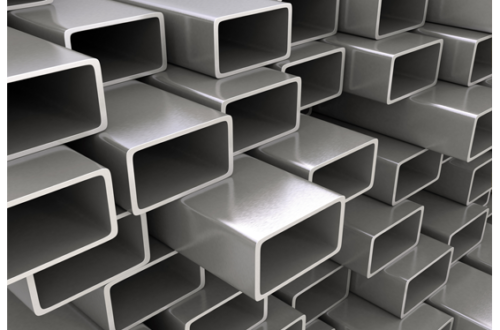Introduction
Laser scar removal has become a popular option for individuals looking to minimize the appearance of scars from acne, surgery, trauma, or burns. While many opt for laser therapy because of its non-invasive nature and effectiveness, a common question is, “How long does it take to see results after laser scar removal?” The answer to this depends on various factors, including the type of scar, the skin’s healing process, and the number of treatments needed. This article will explore how laser scar removal works, the expected timeline for results, and factors that can influence the process.
What Is Laser Scar Removal?
Laser scar removal is a cosmetic procedure that uses concentrated beams of light (lasers) to reduce the app laser scar removal before and after the occurrence of scars. The laser energy penetrates the skin’s surface to promote collagen production, break down scar tissue, and encourage skin regeneration. While the treatment doesn’t completely erase scars, it can significantly smooth the texture, lighten discoloration, and make scars less noticeable over time.
Types of Scars Treated by Laser Therapy
Laser therapy can be used to treat various types of scars, each of which responds differently to the treatment. Understanding the type of scar being treated is key to setting realistic expectations for the timeline and final results.
3.1 Acne Scars
Acne scars are often the result of inflamed blemishes, particularly cysts, that damage the skin tissue. They can be shallow or deep, and the type of acne scar—whether it’s an atrophic (depressed) scar or a raised scar—will influence how well it responds to laser therapy.
3.2 Surgical Scars
Scars from surgery can vary in size, depth, and color, depending on the surgery performed and how the skin healed afterward. Surgical scars can be treated with laser therapy to improve their appearance and help them blend more seamlessly with the surrounding skin.
3.3 Trauma Scars
Injuries from accidents can leave visible marks, often leading to trauma scars. Laser treatments can help reduce the appearance of these scars, making them less prominent.
3.4 Burn Scars
Burn scars can range from minor to severe, depending on the level of damage. Laser therapy for burn scars works by breaking down the damaged tissue and stimulating new skin growth, though multiple treatments may be required.
How Does Laser Scar Removal Work?
Laser scar removal works by targeting the outer layers of skin while penetrating into the deeper layers to break down scar tissue. There are different types of lasers used in scar removal:
- Ablative lasers: These remove the outer layer of the skin (epidermis) and heat the underlying skin (dermis). This process stimulates collagen production, which helps the skin heal more smoothly.
- Non-ablative lasers: These work by heating the underlying skin tissue without removing the top layer. They are less invasive but may require more sessions for optimal results.
Depending on the severity of the scar, the practitioner may choose one or a combination of these lasers to achieve the best results.
Factors Affecting the Timeframe for Results
Several factors can influence how quickly you’ll see results from laser scar removal. Understanding these factors can help manage expectations and provide insight into the healing process.
5.1 Type of Scar
Different types of scars respond to laser treatment in various ways. Raised scars, such as hypertrophic scars, may take longer to flatten, while shallow scars like acne scars can show faster improvement.
5.2 Skin Type
Skin type plays a role in how the skin heals after laser therapy. Those with darker skin tones may need to take extra precautions as they are more prone to pigmentation changes during the healing process.
5.3 Number of Treatments
Some scars may require only a few treatments, while others—especially deep or extensive scars—may require multiple sessions over several months.
5.4 Aftercare Routine
Following proper aftercare is essential to the healing process. This includes keeping the treated area clean, moisturized, and protected from sun exposure, all of which can significantly impact how quickly results are seen.
Expected Timeline for Results
Although each individual’s experience will vary, here’s a general timeline of what to expect after undergoing laser scar removal.
6.1 First Few Days After Treatment
Immediately after the treatment, the treated area may appear red, swollen, or irritated. This is a normal reaction and part of the body’s natural healing process. These symptoms usually subside within a few days to a week.
6.2 1 to 2 Weeks Post-Treatment
During the first two weeks, the treated area may start to peel, and new skin begins to form. It’s important not to pick at the peeling skin as this could lead to scarring. Most people notice that their scars start to lighten and smooth out around this time, but the final results will not be fully visible.
6.3 1 to 3 Months After Treatment
By this time, you will start to see more noticeable improvements in the appearance of the scar. The skin continues to heal, and the collagen production stimulated by the laser begins to make the skin smoother and more uniform in tone. Multiple sessions may be required to achieve optimal results, with noticeable changes becoming more evident after each session.
6.4 Long-Term Results
Long-term results will depend on the type of scar and the number of treatments you undergo. Most people see their final results within 6 to 12 months after completing the treatment sessions. However, continuous improvement may be visible as the skin continues to regenerate over time.
Enhancing Results with Proper Aftercare
Proper aftercare is crucial to ensuring the best possible outcome from laser scar removal. Some aftercare tips include:
- Moisturizing regularly: This helps keep the skin hydrated and aids in healing.
- Avoiding sun exposure: Sun exposure can cause pigmentation issues in the treated area, making scars more noticeable. Use sunscreen if you need to be outside.
- Avoiding harsh skincare products: Use gentle, fragrance-free products to avoid irritation.
- Following the dermatologist’s instructions: Your doctor will give you specific instructions tailored to your treatment, which are vital to follow for optimal healing.
Possible Side Effects and Risks
While laser scar removal is generally safe, there are some potential risks and side effects, including:
- Redness and swelling: Common after treatment but typically fades within a week.
- Hyperpigmentation or hypopigmentation: Some individuals, particularly those with darker skin, may experience changes in skin color.
- Scarring: Though rare, improper care or excessive treatments can cause additional scarring.
- Infection: Always follow your dermatologist’s advice to avoid infection during healing.
At Celibre Medical Corporation, we offer the safest and most effective laser and cosmetic injection treatments available, only using the most current FDA-approved procedures. By delivering superior results and the highest patient-care level, we have become a trusted name in the laser dermatology and cosmetic injection industry.
Conclusion
Laser scar removal is an effective way to reduce the appearance of scars, though the timeline for seeing results will vary depending on several factors, including the type of scar, skin type, and aftercare. While initial improvements can be seen within a few weeks, final results may take several months to develop fully. Following a good aftercare routine and understanding the healing process are key to achieving the best possible results.
Read Also: What Security Measures Does ServiceTitan Use for Login?





